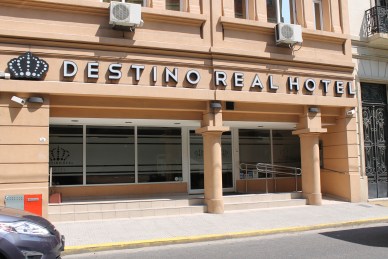
“How is the food?” “Delicious, but it makes me sad.” “Why?” “Because I can only eat this.” “But, we have more food in the kitchen.” “But I have only this one night.”

This was the conversation I had with my young waiter who looked like he had stepped out of a commercial for polo and Polo.
I had wandered around Colonia for a few hours when I heard the lap of waves at the end of a cobblestone street. Charco restaurant is down at sea level, perhaps even a bit below. They have a counter along the windows so that one can sit facing the waves while eating.

I managed to get a table because I wanted to eat dinner at 5 p.m. Apparently later that evening, all the (seven) tables were reserved. Charco is the “house” restaurant of a hotel. The hotel only has seven rooms (or something like that) and next time I visit Colonia, I might try to stay there.

My seafood platter was good. I loved the fresh tart pomelo juice (I like my juice fresh and I’ve tried quite a few!).

But, what I really impressed me was the freshly baked mini breads (and the olives) which came out as an appetizer. The bread had been baked like Italian pizza with corn meal on the bottom. This helps to keep the bread from sticking to the oven but it also adds a crunchy sweetness to the rolls. Warm, buttery, and sweetly corny. All six for me!

When I chatted with the waiter, who spoke beautiful English, I asked him if he was from Colonia. He was. I asked if he had seen some of the world. He had. I asked if he thought that Colonia was the best town in the world. That was why he came back.


















